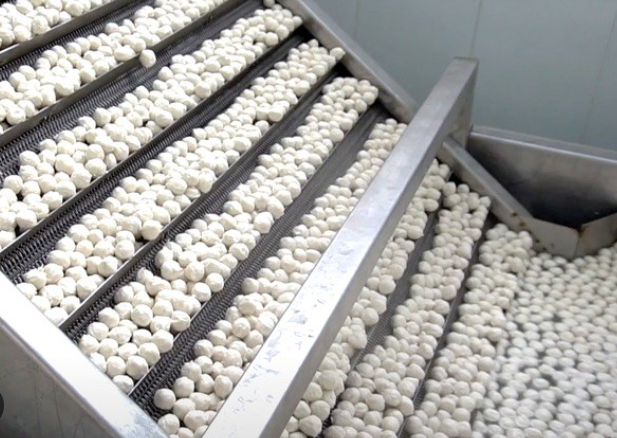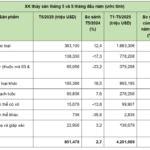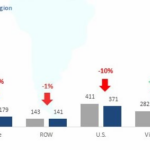
According to data from the Vietnam Association of Seafood Exporters and Producers (VASEP), Vietnam’s surimi and fish cake exports continued their strong recovery in April 2025, reaching a value of nearly $29 million, a 33% increase compared to the same period in 2024. In the first four months of 2025, the export turnover of this product reached over $109 million, up 32% over the same period last year.
Most key markets, including South Korea, Thailand, China, and Japan, recorded positive growth rates ranging from 27% to 40%. In addition, exporters have also effectively approached new markets such as Russia, Spain, and the UK, indicating a trend of market expansion from the early months of the year.
This growth is partly driven by changing consumer trends, with modern consumers favoring convenient and ready-to-eat products such as crab sticks and fish cakes made from surimi. These products are usually pre-cooked and require no further preparation, making them highly suitable for busy lifestyles and the demand for quick meals.
With the rising prices of seafood such as shrimp, crab, and fish due to overfishing, scarcity, and environmental concerns, surimi emerges as a more economical and sustainable alternative. For instance, the FAO fish price index averaged 112.8 points in December 2024. This price advantage makes surimi very appealing to budget-conscious consumers and foodservice sectors, especially in regions where seafood is a staple but becoming increasingly expensive. As a result, the demand for fish cakes and surimi in the global market is expected to increase.
However, opportunities often come with challenges. Currently, pollock production in Russia and the US is on the rise, which is anticipated to increase competition in the markets. Meanwhile, Vietnamese companies producing and exporting fish cakes and surimi are also facing difficulties such as raw material shortages, rising raw material prices, and high production costs, making it challenging for Vietnamese products to compete. In addition, obstacles in obtaining SC and CC certificates for seafood exports remain unresolved, causing delays in the production and export activities of enterprises.
There are currently over 50 Vietnamese companies engaged in the export of fish cakes and surimi. The top three companies, Dalu Surimi, Kicoimex, and Khanh Hoang Seafood, account for 39% of the country’s total export turnover. Despite the challenges, with positive shifts in market trends and consumer preferences, Vietnam’s fish cakes and surimi are expected to continue their upward trajectory in the coming period.
In 2024, the global surimi market size was valued at $6.4 billion. Experts are forecasting this number to surpass $10 billion by 2033. The surimi markets in key countries are demonstrating growth and potential for future success.
China is predicted to lead the surimi market by 2033, with a market value of $1.8 billion. On the other hand, while the US has contributed to the growth of the surimi market, it is projected to have a lower market value compared to China in 2033.
The Green Revolution: Unveiling Vietnam’s $28 Billion Agricultural Haul and its Top Importers
In May, Vietnam’s agricultural, forestry, and aquatic exports maintained an impressive growth trajectory, reaching a remarkable figure of $28 billion. This signifies a substantial increase of over 15% compared to the same period last year. Asia remains the largest market for Vietnam’s agricultural, forestry, and aquatic products, accounting for 42% of the total market share. Specifically, the top three export markets for Vietnam are the United States, China, and Japan.
Seafood Exports “Slow Down” in May Due to US Tax Policy
The Vietnamese seafood industry, after an impressive growth spurt in the initial months of the year, showed signs of slowing down in May 2025. With exports reaching only $851 million, a mere 2.7% increase from the previous year, the sector witnessed its lowest growth rate since the beginning of 2025.
“Expert Phan Dũng Khánh: ‘Bullish Market Predictions: VN-Index to Hit 1,500 Points This Year’”
The influx of capital has been steady and consistently growing, with bottom-fishing demand always lurking during market corrections, providing a strong foundation and support for the market. This indicates that the stock market is experiencing a more stable and sustainable upward trend.





















